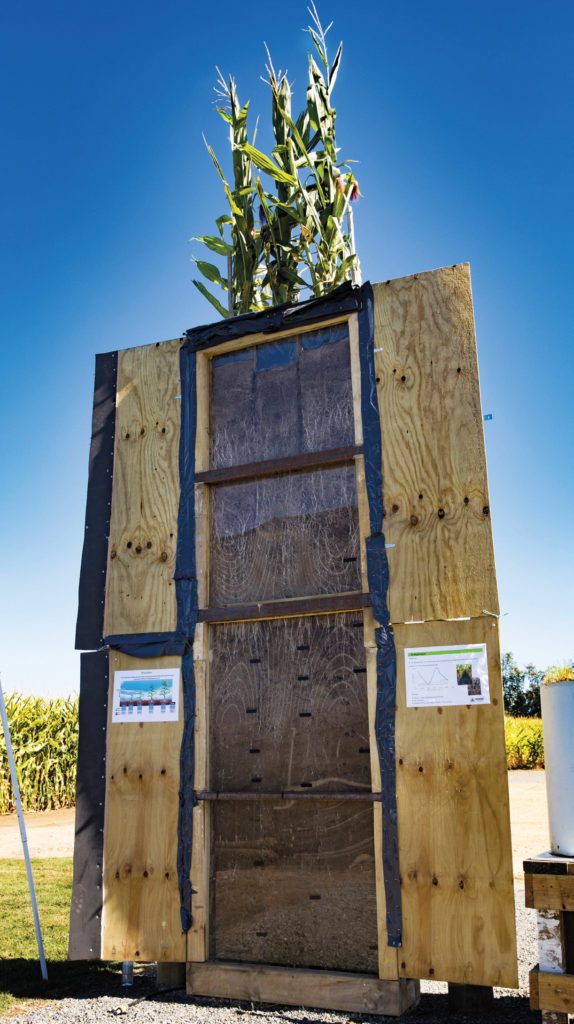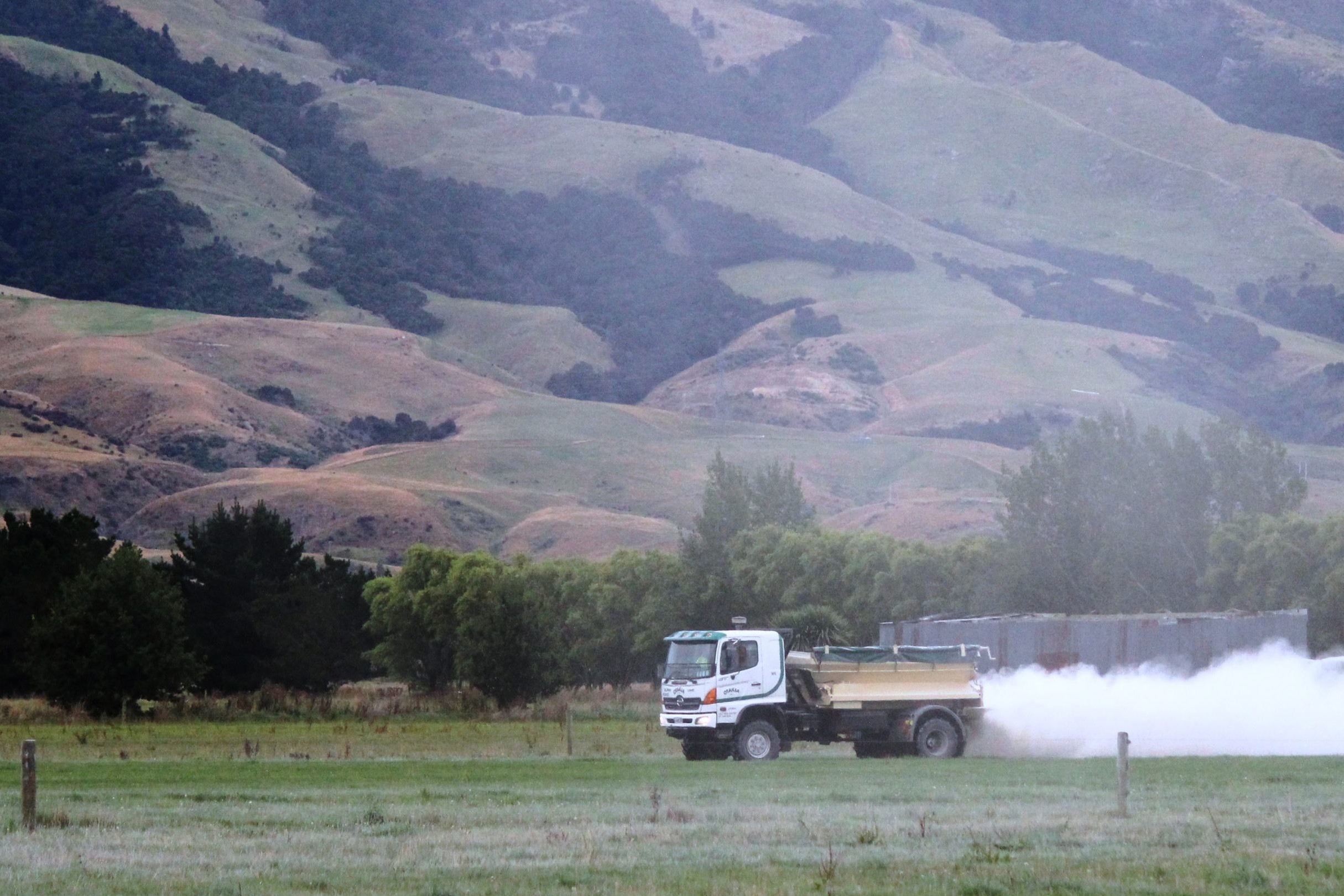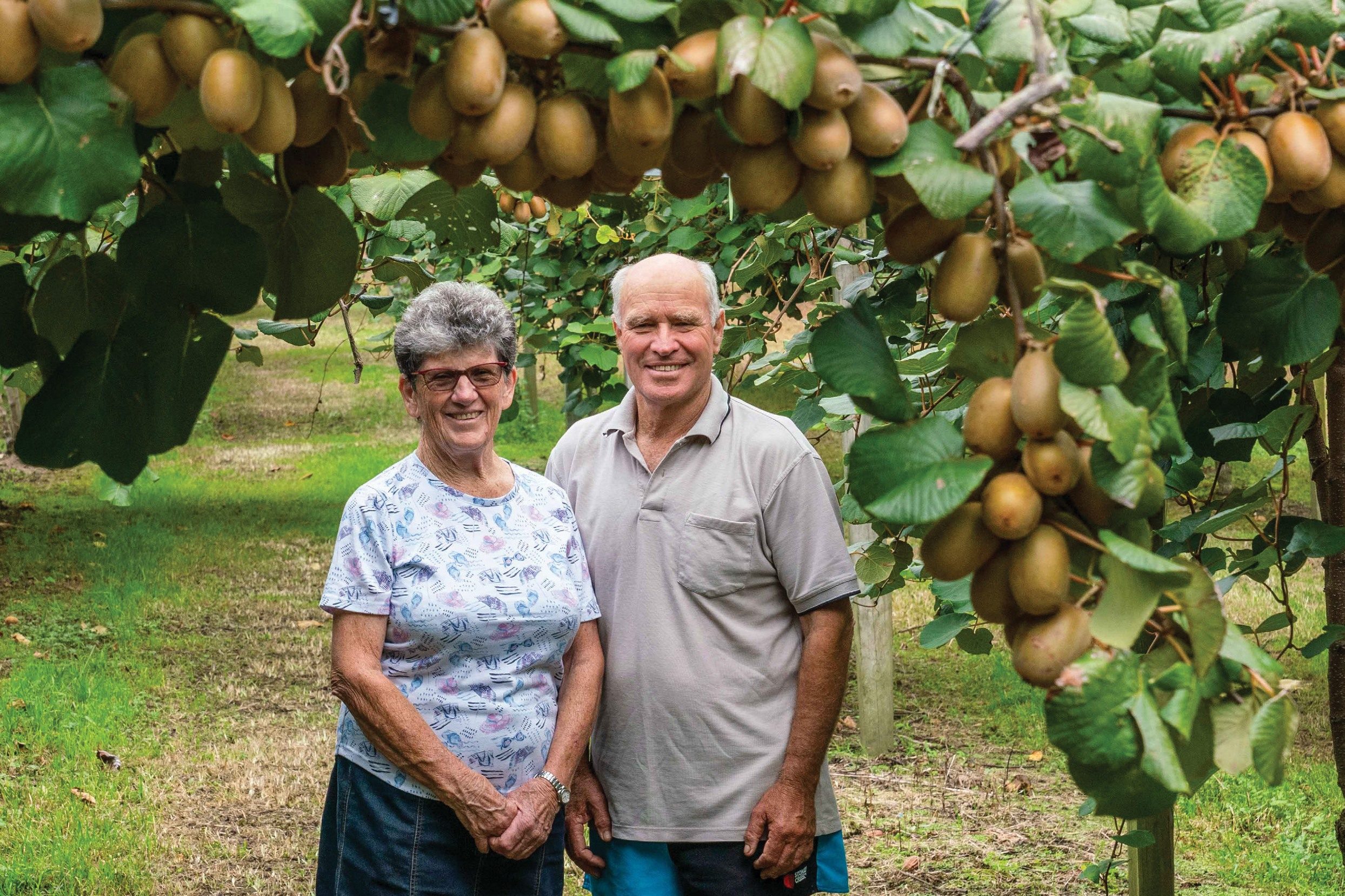Researchers have gone to great depths to see how deep maize roots will grow to reduce nitrogen loss. Raewyn Densley reports.
An increasing focus on the environmental sustainability of farming led a maize seed company to embark on a comprehensive research programme.

“We started off with four key questions and then we set out trials and demonstrations to help answer them,” says Dr Rowland Tsimba, National Research and Agronomy Manager for Pioneerbrand seeds.
The questions were how deep maize roots grow, can they extract nitrogen from depth, what are the nitrogen leaching losses under maize and what is the impact of a winter catch crop (vs a winter fallow period) on reducing nitrogen leaching losses?
To quantify how far maize could root in unimpeded soils, the research team built a rhizotron – a soil-filled box with doors which could be opened to reveal a transparent perspex window. Maize seeds were planted at the top and their roots could be viewed as they grew down through the soil profile.
The first rhizotron was around 2.5 metres deep but within 10 weeks of planting the roots had reached the bottom so the next season a larger, 3.8m deep rhizotron was constructed.
“We used a fork-lift to plant the maize seeds in the top and we monitored the root depth on a weekly basis,” Rowland says. “At 70 days post-planting the maize plants were about 95cm high, but the roots were almost double that and within a week of the maize plant tasseling, the roots had reached the bottom of the rhizotron.”
“We all knew maize roots went deep, but we were all surprised just how fast they grew and what the potential rooting depth was in an unimpeded soil. The next question was whether those deep roots were actually capable of taking up nitrogen.”
N-15 TRIAL WORK
Naturally occurring nitrogen is a mix of two stable isotopes: the vast majority (99.6%) is N-14 with the remainder being N-15. In the 1930s researchers developed a method of concentrating N-15 and today N15-enriched nitrogen can be purchased, at high cost, for research purposes. N-15 has been used extensively in nitrogen uptake studies across a range of agricultural and horticultural crops.
Maize was planted using a conventional planter and a starter fertiliser of DAP was applied at 40kg N/ha. When the maize was about shin height (V6) urea was broadcast at 75kg N/ha across the trial area.
“Within a week of applying the urea, we injected 30kgN/ha of N-15-enriched nitrogen to a depth of 60, 90 or 120cm under each plant within the centre row of each treatment plant,” Rowland says. “An equivalent amount of standard urea was broadcast on the centre row of the control plants at the same time.”
Ten consecutive plants were marked, and ears, leaves and husks were dried and finely ground. A representative sample was collected and sent to the University of California Davis Stable Isotope Facility for analysis.
The results showed uptake of N-15 into the grain was the same regardless of whether it was inserted at 60, 90 or 120cm depth.
This research showed that roots not only grow to 120cm or beyond, but that they are also capable of extracting N at depth.
“This was an exciting result because it shows that maize is a great option for removing nitrogen which has dropped below the rooting depth of shallow-rooted pasture species like ryegrass and clover,” Ian Williams, Farm Systems and Environment Specialist for Pioneer says.
“It is further evidence of the value of maize to mop up surplus nitrogen in grazed winter crop and effluent paddocks.
“We also know that regardless as to whether you direct drill or cultivate, when you take out a permanent pasture to regrass it there is a nitrogen loss associated with the mineralisation of root material. Spraying out the paddock you want to regrass and planting it in maize in the spring could be a better option than going directly from grass-to-grass in the autumn.”
NITROGEN LEACHING UNDER MAIZE
In last month’s Dairy Exporter, we reported on a nitrogen leaching trial which has been conducted in the Waikato for the past three seasons. It has demonstrated very low (6-7kg N/ha) annual leaching losses from maize and a winter crop system but higher losses (around 64 kg N/ha) when the ground was left fallow after maize silage harvest.
“An annual N-loss of less than 10kg/ha is extremely low,” Ian says. “While some historic trials and modelling may have suggested that maize contributed to N-leaching, we now have hard data to show that it can be part of the solution for local dairy farmers.
“The Waikato N-leaching trial was replicated at Ashley Dene in Canterbury where an existing infrastructure with suction cups inserted at 70cm was used. During the 2019/20 season, 26kg N/ha was recorded at 70cm under the catch crop. Based on our research in the Waikato, we know that measurements conducted at 70cm will overestimate loss by about 350% for a deep-rooted crop like maize. This means the actual N-loss from the South Island maize plus catch crop trial are likely to be less than 10kg N/ha.
WINTER COVER CROPS
One of the key take-home messages of the nitrogen leaching trial work was the importance of having something in the ground and growing over the winter months.
“Whether you are growing maize for silage or grain, it is really important to get a crop or pasture established and keep it growing over the winter,” Ian says. “Any crop will require nitrogen and water and therefore it will reduce both the amount of nitrogen in the soil and the drainage volume.”
In the period October 22, 2020, to August 31, 2021, the Waikato trial site had a rainfall volume of 1021mm.
A drainage volume equivalent of 265mm rainfall was collected from under the maize-fallow plots while just 90mm was collected from under the maize-ryegrass plots.
“The reduction in water drainage through the soil profile really surprised us,” Rowland says. “We knew plants used water through the transpiration process but before we did this trial, we did not have a good grasp of the magnitude, especially during the winter period.”
Over the past decade maize breeders have made significant advances in the grain and silage yield potential of short maturity maize hybrids.
“Grain growers throughout the country, and maize silage growers in cooler districts used to view maize silage as a 12-month crop because it was harvested too late to allow the establishment of a winter crop,” says Ian.
“That has changed, and shorter maturity hybrids can now offer growers from Canterbury north the ability to get an economic yield and still get the crop off in time to plant something else.”





